The MacDonnell Ranges Cycad (Macrozamia macdonnellii).
Cycads are very ancient plants, their ancestors 200 million years ago were the dominant flora on the planet. The Jurassic Era of the dinosaurs is also known as “The Age of the Cycad”.
Cycads existed before flowering plants. Often mistaken for palms, cycads are acutally primitive seed plants (Gymnosperms) along with gingkos and conifers.
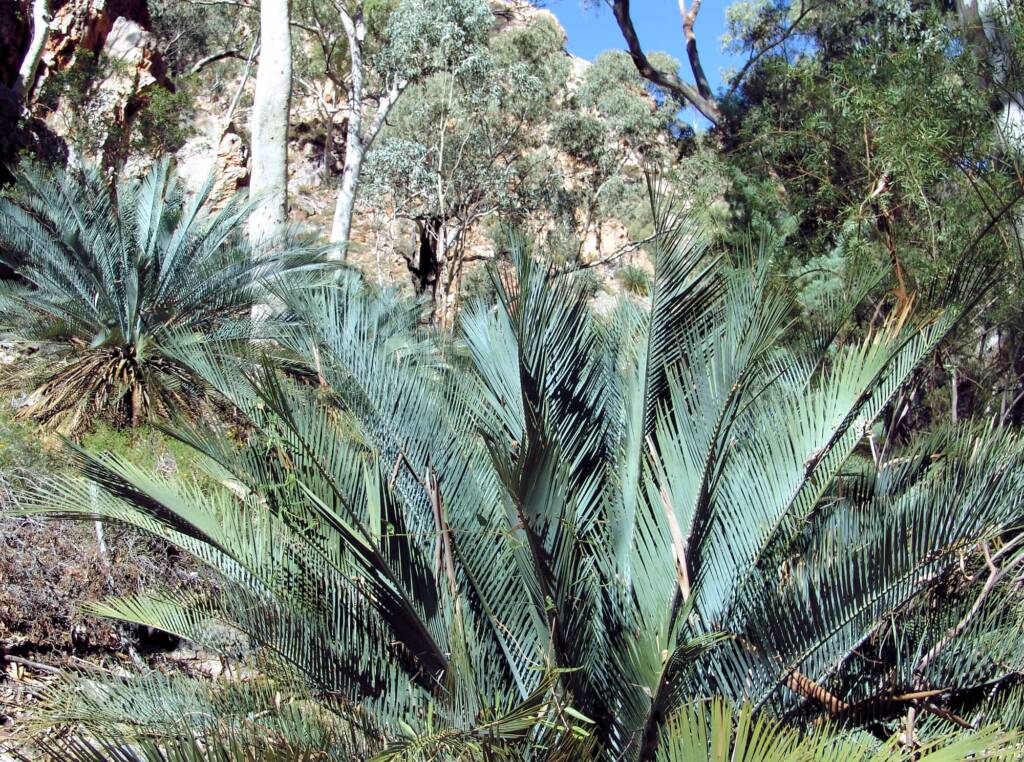

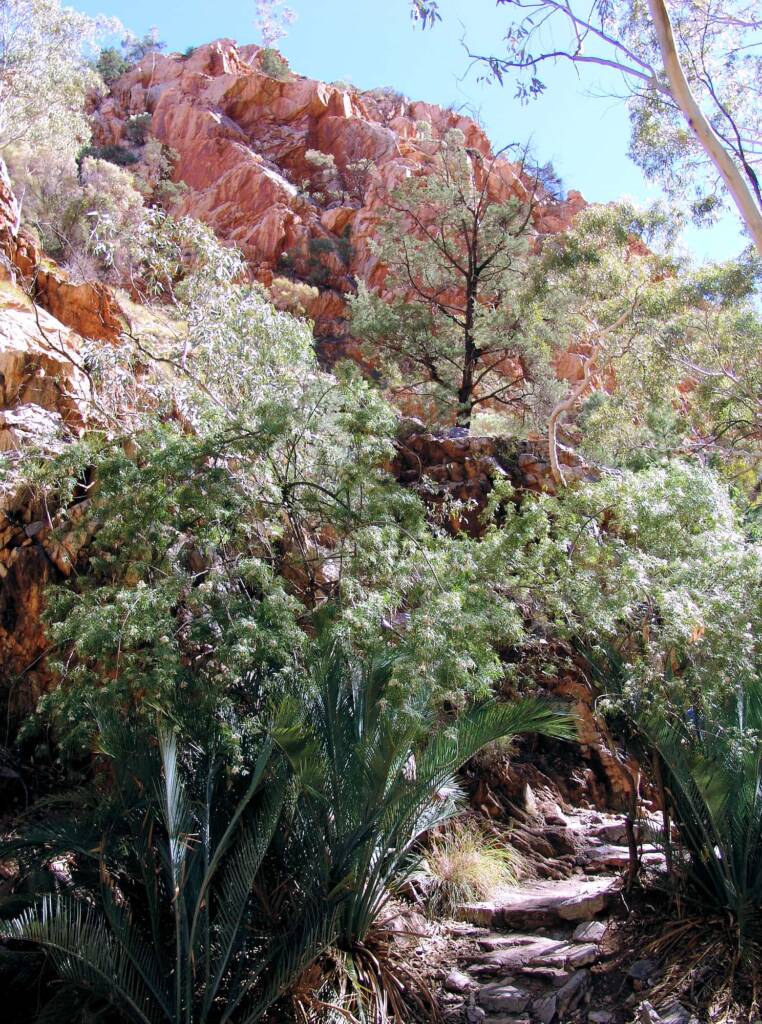
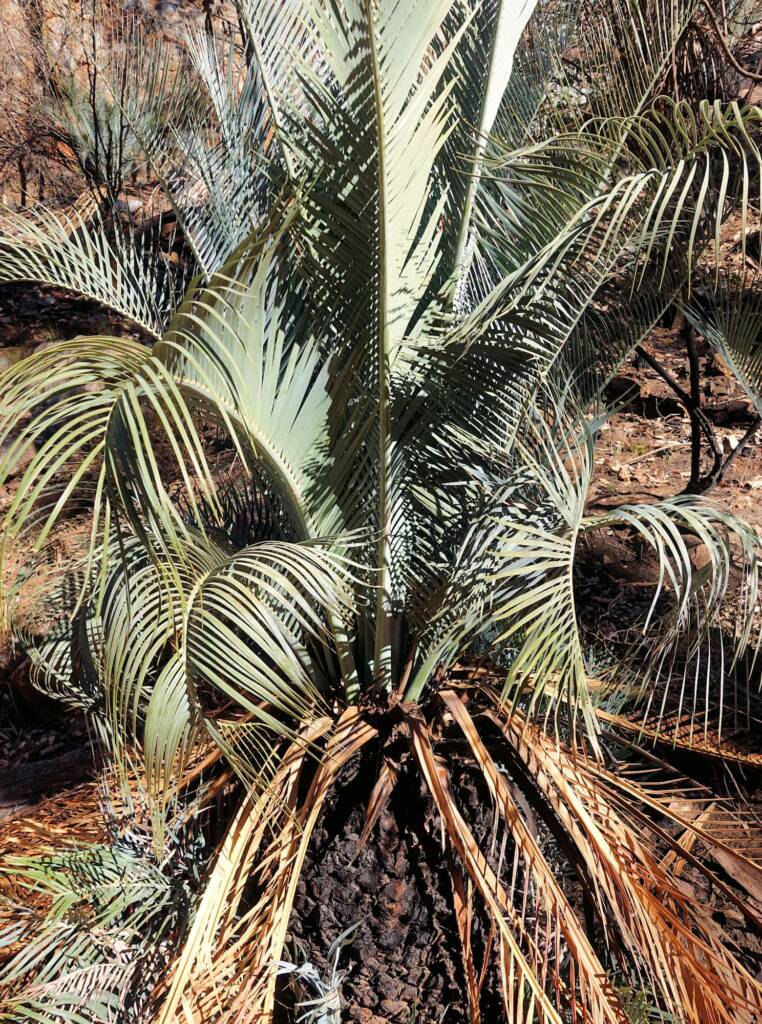
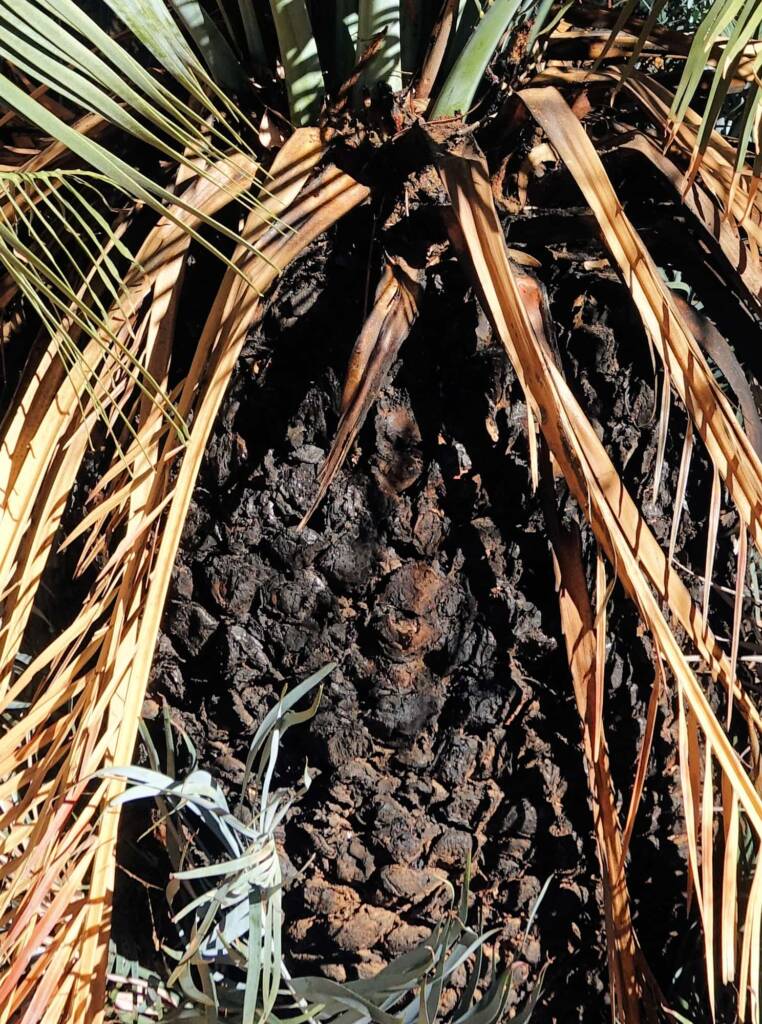
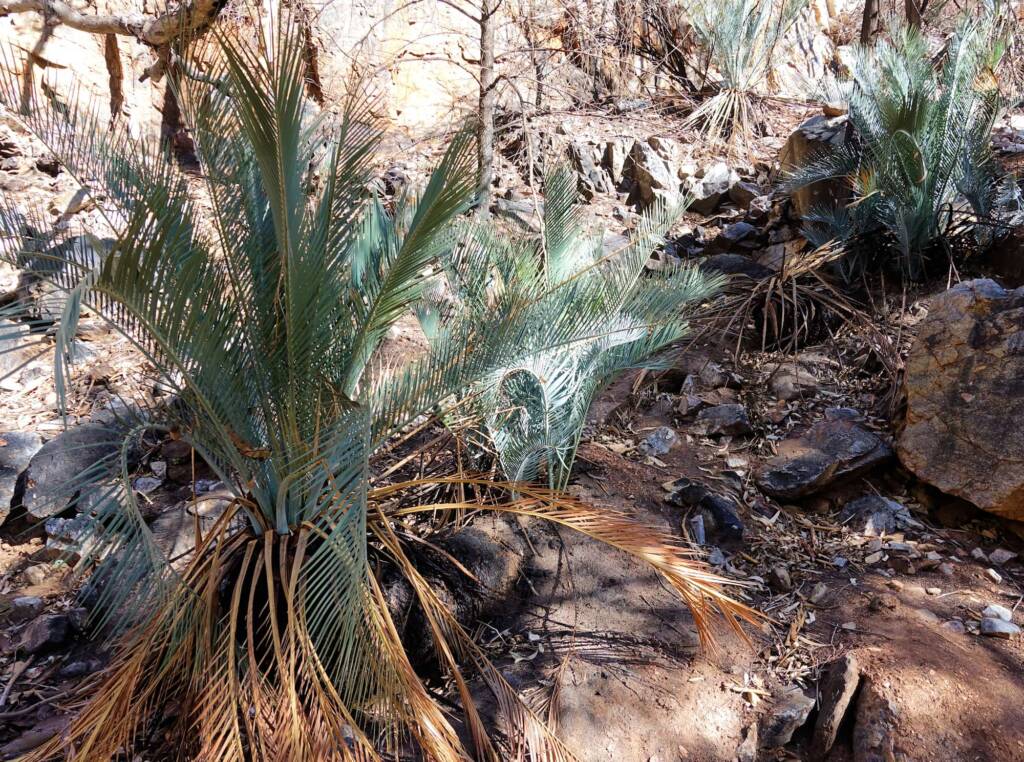
This rare and endemic species of cycad Macrozamia macdonnellii, known by its unique blue-green appearance, has been isolated for millennia in refuges in the MacDonnell Ranges. It’s nearest relative are located 1,400 kms away.
This ancient relict is from a cooler and wetter climate of Gondwanaland, 50 million years ago in the Tertiary period, when temperate rainforests and large inland seas and lakes prevailed.
In this arid desert landscape, cycads now rely on sheltered refuges along rocky slopes, gullies and river edges near permanent water. Bushfires, invasive weeds, decline of pollinators and seed poaching are threats to the survival of this endemic species.
Nutrients are provided in poor soils by a unique relationship with a cyanobacteria or blue-green algae that lives in it’s exposed coral-like roots systems. The cycad provides a moist environment for the algae, and in return, the algae provides the cycad with nitrogen fixed from the atmosphere.
These cycads rely on a local, minuscule thrip insect Cycadothrips albrechti, less than 1 mm in size, which only live in the male cycad cones. Pollination occurs every few years when the thrip are attracted to the perfume and heat of the mature male pollen cones. They feast on the pollen then are attracted into the female cone by an even more intoxicating aroma.


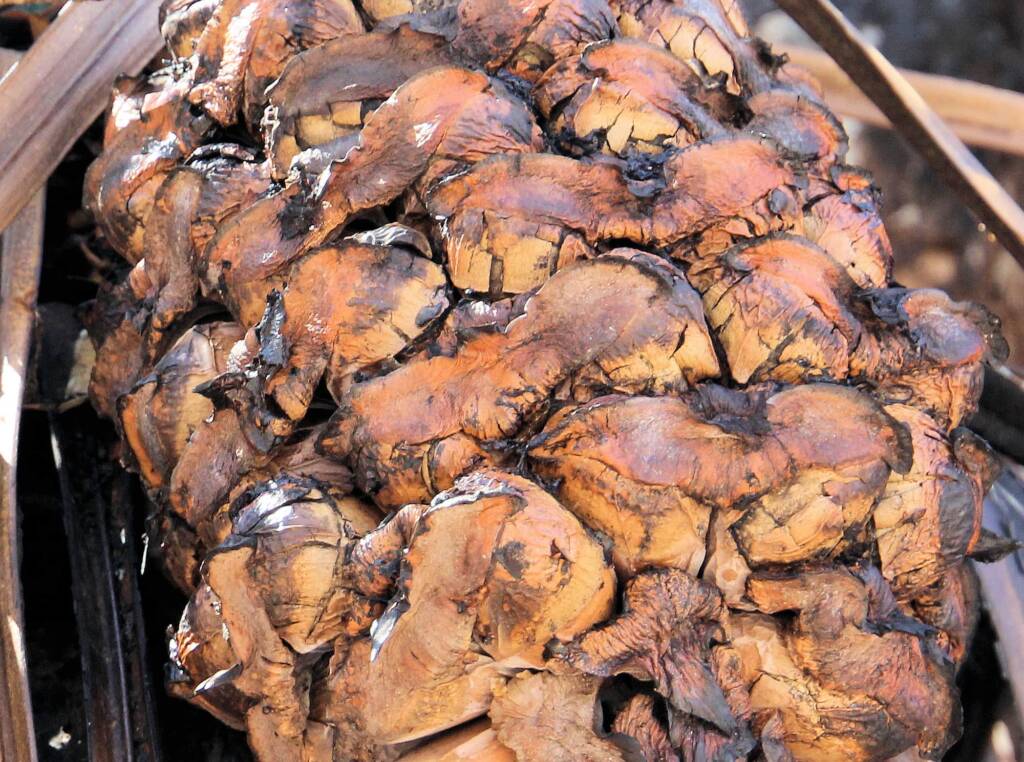
Angkerle Atwatye (Standley Chasm) hosts the most prolific concentration of these thrips and therefore sustains the largest fertile cycad colony in the region along with Palm Valley and Watarrka (Kings Canyon). Some of our specimens here are estimated to be 500-1000 yrs old and are a mythological presence in local Arrernte culture.
Western Arrernte name: tywekekwerle
Distribution: Restricted to Central Ranges
Conservation Status: Near-threatened, restricted
Dioecious: separate male (pollen cone) and female (seed-bearing) plants. The female produces a magnificent cone of 100+ bright red poisonous seeds, largest seeds of all cycad family.
Source: Angkerle Atwatye (Standley Chasm) signage
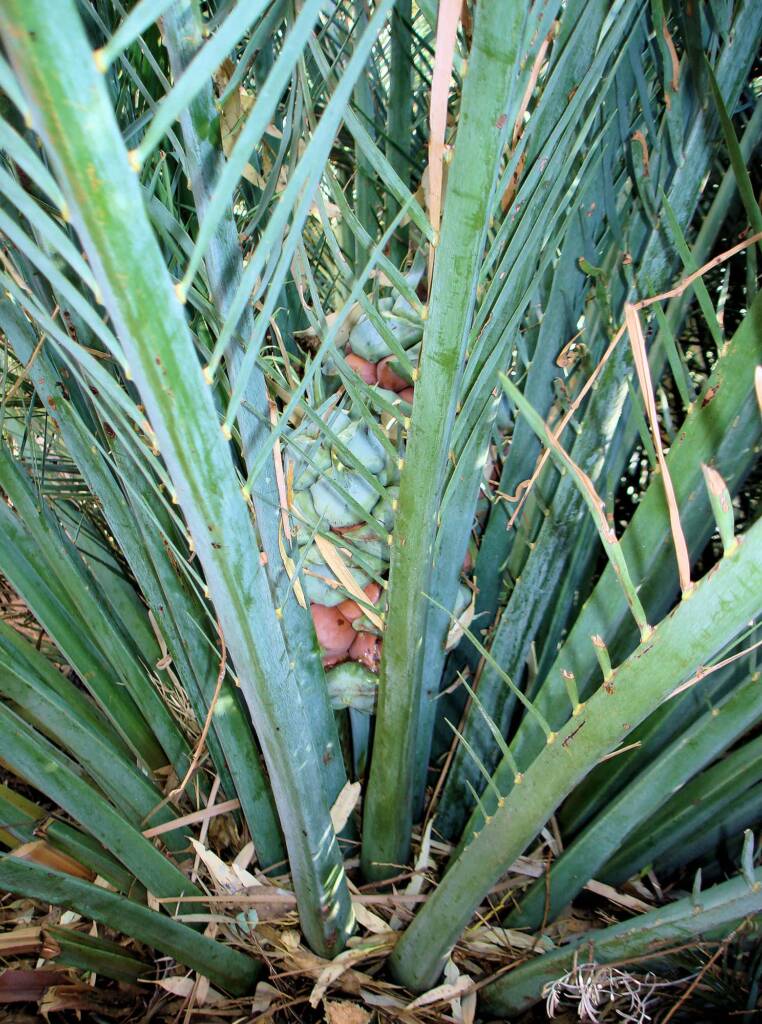
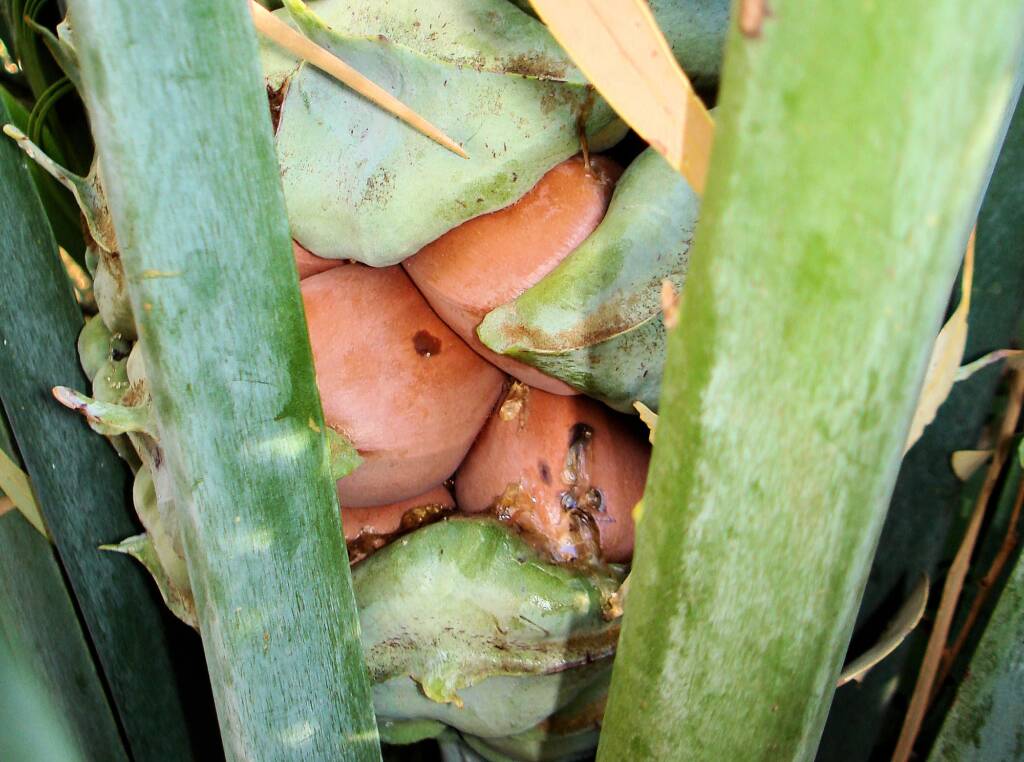

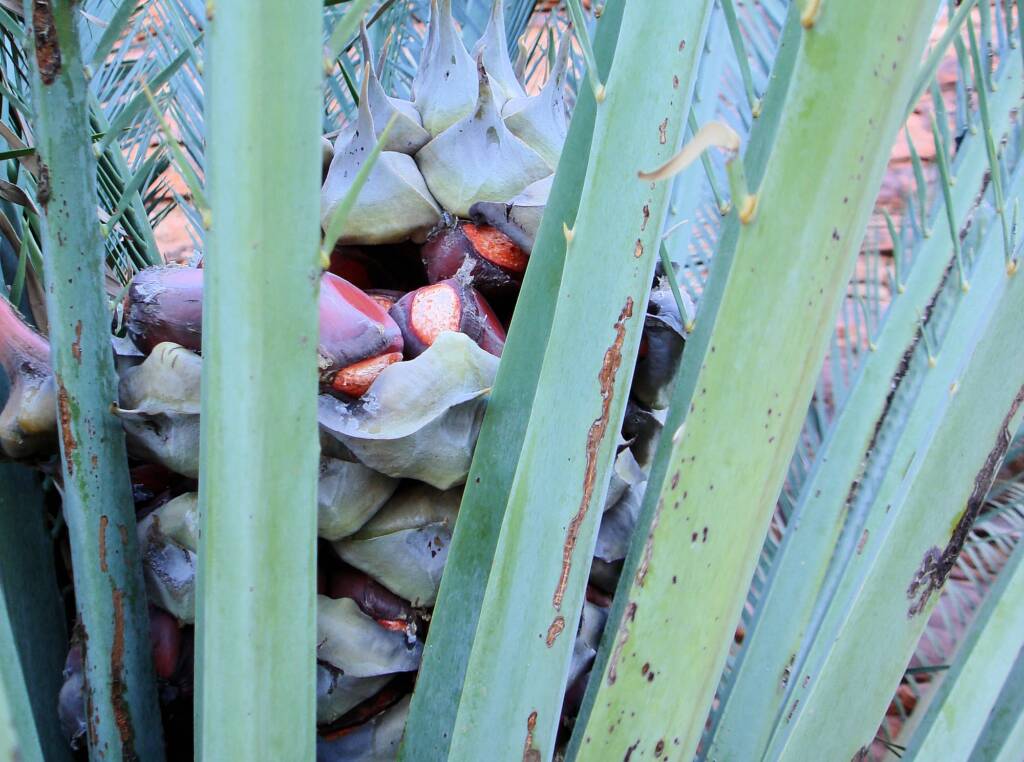
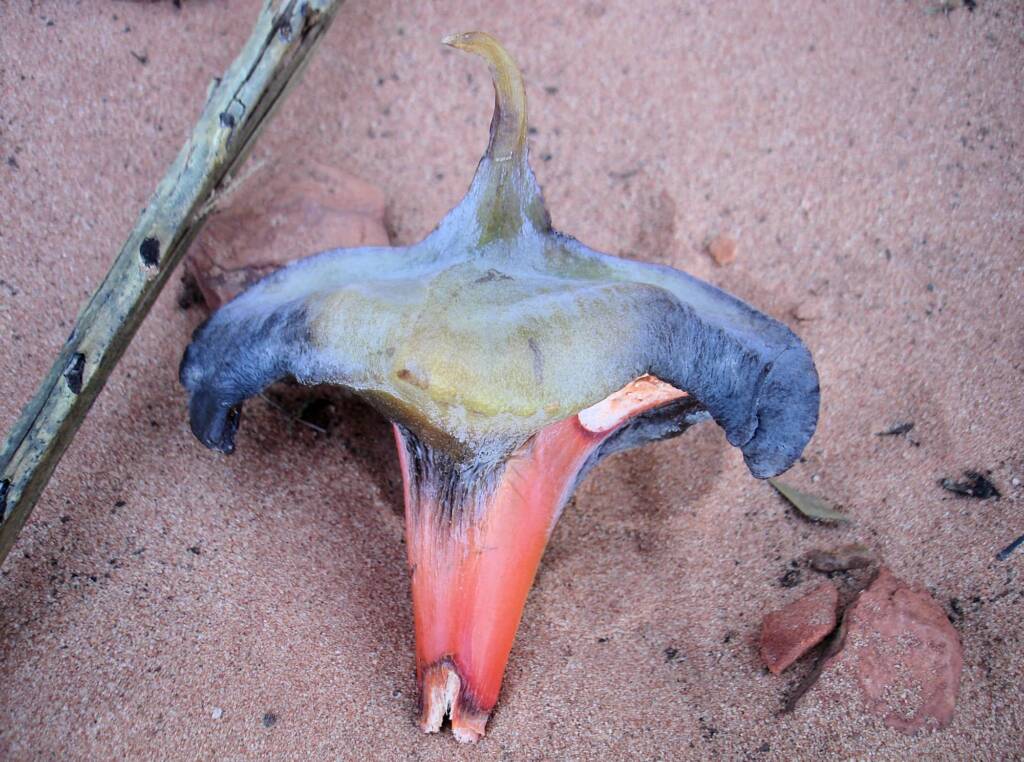
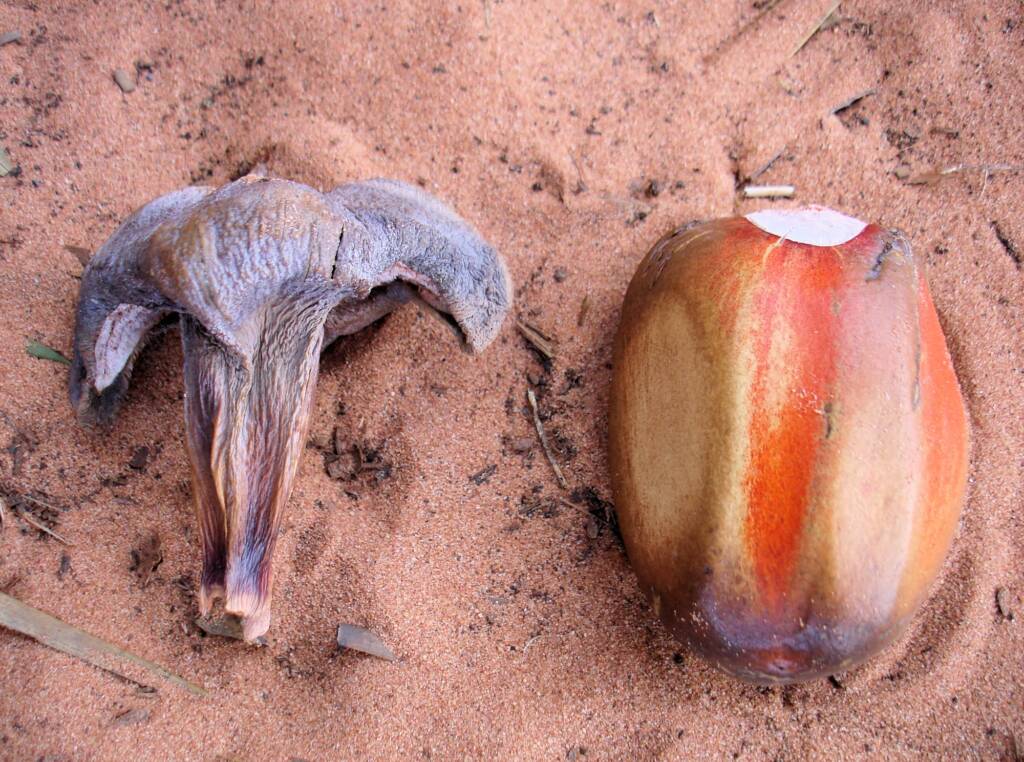
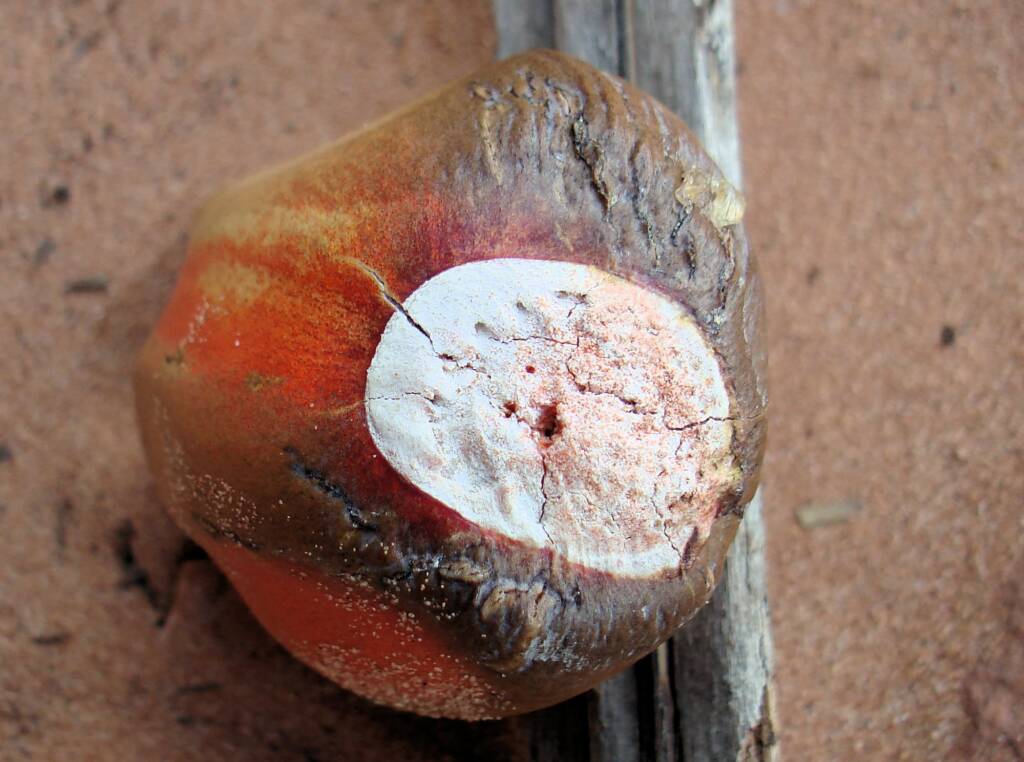
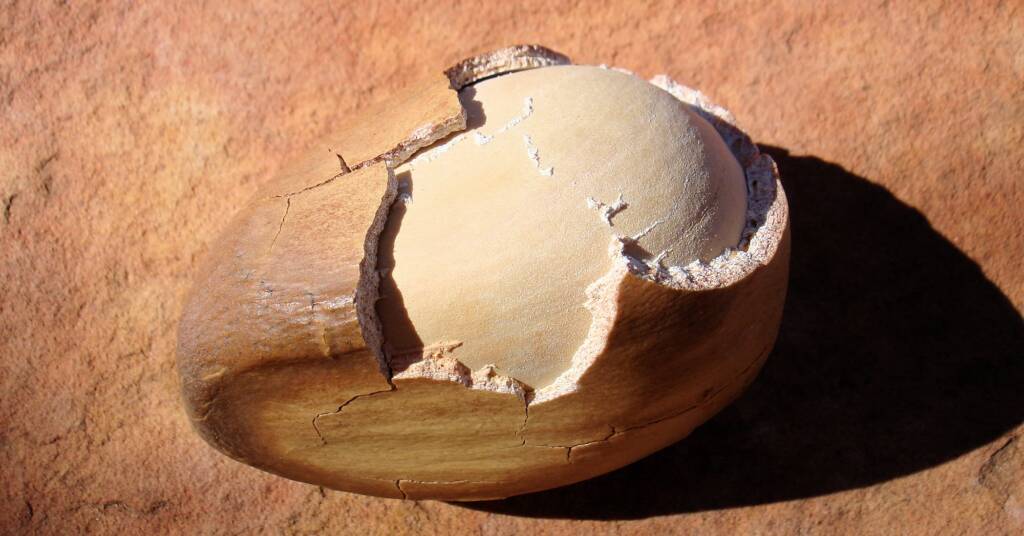
It is known that cycads have been used by Aboriginal people in the Northern Territory. The seed is rich in starch, which is treated by heat and leaching to remove toxins before being eaten. Exudates from the leaves and sporophylls are used for medicinal purposes, as is the ground seed.2
More information on the Macrozamia macdonnellii under Watarrka National Park.
Images © CK Leel
- Scientific classification
- Kingdom: Plantae
- Clade: Tracheophytes
- Division: Cycadophyta
- Class: Cycadopsida
- Order: Cycadales
- Family: Zamiaceae
- Genus: Macrozamia
- Species: M. macdonnellii
- Binomial name: Macrozamia macdonnellii
Footnote
- Macrozamia macdonnellii – Northern Territory Government, https://nt.gov.au/__data/assets/pdf_file/0008/376271/macrozamia-macdonnellii.pdf
- Management Program for Cycads in the Northern Territory of Australia, 2009–2014; Cycad Management June09.indd – Department of Agriculture … by DT Liddle, 2009, https://www.environment.gov.au/biodiversity/wildlife-trade/publications/management-program-cycads-nt-2009-2014
